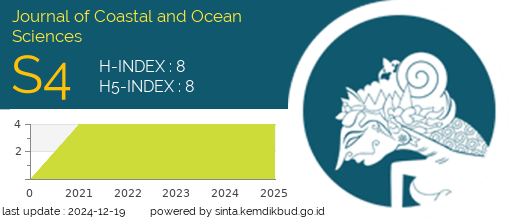The Development Strategy Tourism in Mapur Island Marine Conservation Area Bintan Regency
DOI:
https://doi.org/10.31258/jocos.5.1.39-44Keywords:
Tourism Water Park, Tourism, SWOT, Mapur IslandAbstract
The coastal area of Mapur village is a conservation area that is a tourist attraction because of its uniqueness and natural beauty. This aims to increase people's income, utilize seagrapes without exploiting them, and make tourism while still paying attention to preserving the aquatic environment sustainably. This research was carried out in February 2022 in the Bintan Waters, Mapur Island, Bintan Regency, Kepulauan Riau Province. The method used in this study is mixed, including qualitative and quantitative methods. In this study, researchers explored data and information on topics or issues related to strategies for tourism development by describing qualitative and quantitative data using SWOT analysis. In selecting informants, the researchers used a purposive sampling technique with 30 respondents: a village leader, a PKK leader, the LPM, a youth organization leader, an Ecology Foundation Team, three fishermen, and 22 tourists. Results show that Mapur Village can be categorized as a water conservation area, which has now been designated as TWP (Tourism Water Park) in Bintan Timur. This village has excellent potential and is very promising as a tourism destination based on its natural resources, such as abundant sea grapes with high economic value ecological conditions. Waters and social support, beautiful beaches, and coral reefs in good condition all support the development of tourism on Mapur Island. The best strategy is to implement an aggressive approach by maximizing existing strengths and opportunities, which can be done with 4 SO strategies: cultivating sea grapes with eco-farming techniques, utilizing sea grapes and beautiful beaches to bring in tourists, and opening business opportunities for rural communities. They are building cooperation between village communities and the government, universities, and LPM and expanding promotions
Downloads
References
Ma'ruf, W.F., Ibrahim, R., Devi, E.N., Susanto, E., Amalia, U. (2013). Caluerpa racemosa and Gracilaria verrucosa profile as edible foods. Jurnal Saintek Perikanan, 9(1): 68-74.
Ministry of Maritime Affairs and Fisheries. (2019). Coastal conservation and sustainable livelihoods through seaweed cultivation in Indonesia. Conservation Practitioners and Cultivators. 50.
Rangkuti, F. (2019). SWOT analysis, techniques for dissecting business cases. PT Gramedia Pustaka Utama. Jakarta. 241.
Tanduyan, S.N., Gonzaga, R.B., Bensig, V.D. (2013). Off-bottom culture of Caluerpa lentillifera in three different water levels in the marine waters of San Francisco, Cebu, philippines. Journal of Coral Reff Studies: 123-132
Viktor, A., Darwis. (2019). Development of Eco-edu-sport-based small island tourism (The case of the Mapur Island Eco-Run, Kepulauan Riau Province). Postgraduate grant research report. Universitas Riau.






